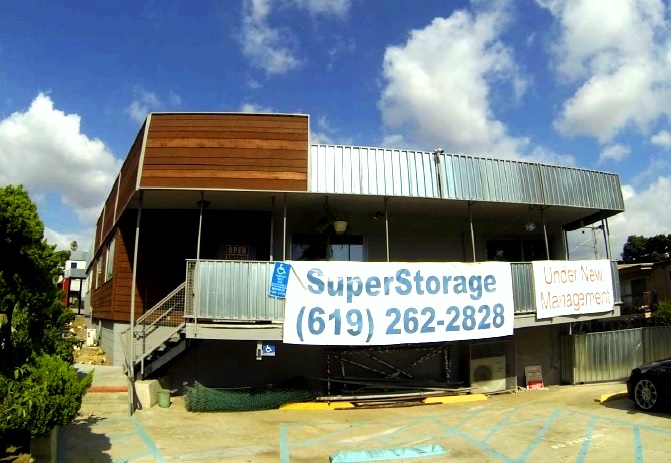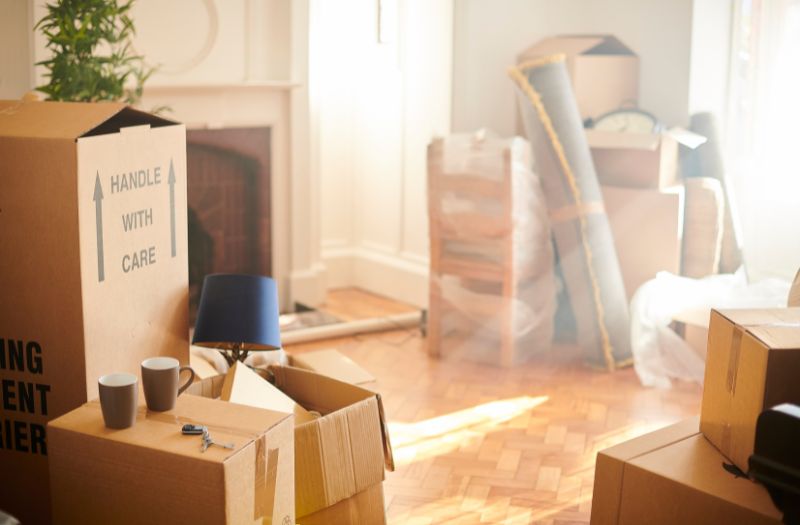Moving to a new home marks a significant life event, laden with the promise of a fresh start and new adventures. However, the process leading up to the big move is often rife with challenges and decisions.
From packing your cherished possessions to choosing the right storage solution, there’s a lot to consider.
In this comprehensive guide, we’ll walk you through the intricacies of moving, storage, and decluttering, ensuring your transition to a new home is as seamless as it is exciting.

1. Planning Your Move: A Blueprint for Success
Moving-day chaos begins with a lack of planning. Sit down, breathe, and draft an action plan. What activities need tackling before the moving process? Having a detailed checklist ensures nothing slips through the cracks.
Create a Detailed Action Plan:
- List tasks and deadlines.
- Cross off completed tasks for a visual progress map.
Prioritize Your Checklist:
- Identify crucial tasks.
- Tackle them early for peace of mind
2. Decluttering Before Packing: Out with the Old
Moving presents an excellent opportunity to declutter your belongings. Before you start packing, assess each item’s necessity. Donate or sell items you no longer need or use. This reduces the number of things to pack and ensures a fresh start in your new home. Remember, less clutter means a smoother move and a tidier living space in your new place.

3. Efficient Packing Tips to Make Your Moving Process Smoother
Pack your belongings efficiently and clean your current space – the checklist is your compass. Each tick marks a step closer to a stress-free move.
Label Boxes Clearly
- Clearly mark each box with its contents and the room it belongs to. This simple step will save you a lot of time and effort when unpacking in your new home.
Pack Room by Room
- Instead of random packing, focus on one room at a time. This systematic approach makes both packing and unpacking more organized and less chaotic.
Use Quality Packing Materials
- Buy good quality boxes, packing paper, bubble wrap, and strong tape. Proper packing materials provide better protection for your belongings during transit.
Dismantle Furniture
- Disassemble large furniture items, such as tables and bed frames, to save space and make them easier to transport. Keep screws and bolts in labeled bags for easy reassembly.
Pack Essentials Separately
- Put together a box or container of necessities that you’ll need right away when you get to your new place. Towels, an extra set of clothes, any necessary paperwork, and anything else you might need for the first two days should all go into this category.
Protect Fragile Items
- Use bubble wrap or packing paper to individually wrap delicate items. Place them in boxes with extra cushioning, and mark these boxes as “Fragile” to ensure careful handling.
Fill Empty Spaces
- Utilize every inch of space in your boxes. To keep things from shifting about during the transfer, stuff empty spaces with soft items like clothes or towels. This provides additional padding while maximizing space efficiency.

4. Choosing the Right Movers: Stress-Free Transfer
Selecting a moving company is crucial for a stress-free transfer. Do thorough research, read reviews, and get recommendations. Ensure the company is licensed and insured. Request quotes from multiple movers, compare services and choose one that aligns with your needs and budget. Here is everything to consider when choosing the right movers:
Reputation and Reviews
- Look into the firm’s standing by reading comments and testimonials posted online. A reliable mover should have positive feedback from previous customers.
License and Insurance
- Verify the licensing and insurance coverage of the moving company. In addition to ensuring an expert level of service, this will safeguard your possessions.
Transparent Cost Estimates
- Request detailed cost estimates to avoid surprises. A reputable moving company provides clear breakdowns of expenses, including any potential additional charges.
Services Offered
- Assess the range of services offered. A full-service mover can handle packing, loading, unloading, and even storage, simplifying the entire process.

5. Renting a Storage Unit: Simplicity and Security
Sometimes, the timing of moving out and into a new place doesn’t align. In such transitional phases, temporary storage can be a lifesaver. Here’s how renting a storage unit brings simplicity and security to the process:
Flexibility
- Determine the size of the storage unit based on your belongings. Storage facilities offer various room sizes, ensuring you only pay for the space you need.
Accessibility
- Most storage facilities offer extended access hours so you can access your stored items when it’s convenient for you, giving you flexibility and control over your belongings.
Online Convenience
- Renting a storage unit is a straightforward process. Generally, you can choose the right room size and complete all necessary formalities online, saving you time and effort.
24/7 Surveillance
- Security is a top priority. Reputable storage facilities provide 24/7 surveillance, giving you peace of mind that your possessions are safe and secure.
Protection from Elements
- Climate-controlled units ensure that temperature-sensitive items are shielded from adverse conditions, preserving their quality.
Short-Term or Long-Term Options
- Whether you need storage for a few weeks or an extended period, self-storage offers flexible rental terms to accommodate your specific timeline.

6. Choosing the Right Storage Company: Making Wise Decisions
Not all storage providers are created equal. Consider factors like access, security, and costs before selecting your storage partner.
Security Measures
- Opt for facilities with 24/7 surveillance, secure access, and alarm systems to protect against theft.
Condition of the Facility
- Check for well-maintained facilities with monitored humidity levels, especially if storing sensitive items.
Location and Accessibility
- Choose a facility near your new home for easy monitoring and quick access. Confirm accessibility details before committing.
Combining Moving and Storage
- Streamline the process by selecting a company that handles both moving and storage, ensuring a seamless transition.
Cost Considerations
- Compare costs and beware of hidden fees. Be cautious with introductory deals, as long-term storage may outweigh initial discounts. Additionally, explore insurance options for added protection.

7. From Toothbrush to Kitchen Sink: Are All Items Suitable for Storage?
While storage units are a godsend for many belongings, certain items should stay far away. Here’s a heads-up on what to keep out:
Perishable Goods
- Any perishable items, from food to plants, should never find a home in your storage unit to avoid unwanted surprises.
Valuables
- Items of significant value, both sentimentally and monetarily, are better off in a more secure location like a safe deposit box.
Hazardous Materials
- Storage units are not equipped to handle hazardous materials, so keep those chemicals, explosives, or other dangerous substances far away.
In Conclusion
In your moving adventure, remember – it’s not just about the destination; it’s the journey. With this ultimate guide, navigate the twists and turns of moving with ease. Pack your belongings, lock the door, and step into a new chapter of your life, where home is wherever you make it. Happy moving!

If you’re looking for a storage facility to store your belongings, SuperStorage San Diego has got you covered in this department. Here at SuperStorage San Diego, we offer a wide range of unit selections and top-notch security. To learn more about our self-storage facility, please check out our website at https://superstoragesandiego.com/.
